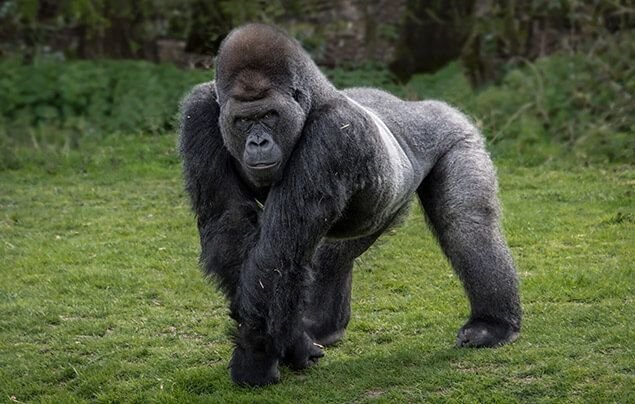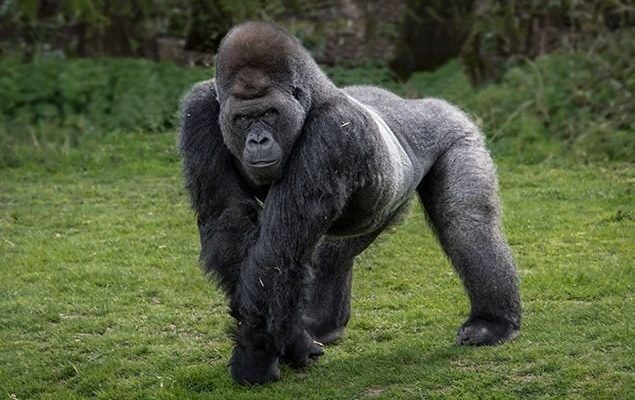
Gorillas are the largest living primates on Earth, making them a sight to behold. Picture them as the gentle giants of the jungle—strong yet surprisingly gentle. They share a significant amount of their DNA with humans, bringing us closer to these magnificent animals than we might initially think. The more you learn about gorillas, the more you realize that their world is layered with intrigue and depth.
1. Gorillas Share 98% of Their DNA with Humans
Here’s the thing: when you hear that gorillas share about 98% of their DNA with us, it’s easy to feel both amazed and connected. This genetic similarity means that gorillas experience emotions much like we do. They can feel joy, sadness, and even empathy. For example, mother gorillas care for their young in ways remarkably similar to human parenting.
The bond between a mother gorilla and her infant is incredibly strong. Mothers will nurture and protect their babies, teaching them how to find food and interact with their environment. Imagine a caring parent guiding their child—this is what you’d witness in the heart of a gorilla troop.
2. There Are Two Main Types of Gorillas
When we talk about gorillas, it’s essential to know that there are two main types: the Eastern gorilla and the Western gorilla. The Eastern gorilla is further split into two subspecies: the Mountain gorilla and the Eastern lowland gorilla. On the other hand, the Western gorilla includes the Western lowland gorilla and the Cross River gorilla.
Each type lives in different habitats across Africa. Mountain gorillas reside in high, dense forests in the Virunga Mountains, while Western lowland gorillas typically roam the lowland rainforests. This variety in environments has led to different behaviors and adaptations. Seeing the differences in how they interact with their surroundings can be quite eye-opening.
3. They Are Mostly Herbivores
Gorillas might look intimidating, but their diet is primarily made up of plants. They munch on leaves, stems, and fruits, with certain species preferring specific types of greenery. You might be surprised to learn that an adult male gorilla can consume up to 50 pounds of vegetation in a single day! Picture a gorilla moving through the forest, picking leaves with a gentle touch.
Interestingly, their diet varies depending on habitat and availability of food. For instance, mountain gorillas may eat large quantities of foliage, while lowland gorillas might enjoy a more diverse range of fruits. This adaptability is crucial for their survival in diverse ecosystems.
4. Gorillas Are Social Creatures
You might think of gorillas as solitary animals, but they are actually quite social. They live in groups called troops, which typically consist of several females, their offspring, and a dominant male known as a silverback. The silverback’s role is to protect the troop and lead them to food sources.
The social structure within these troops is fascinating. Gorillas communicate through various sounds, body language, and facial expressions. For example, when a gorilla wants to show submission, it may display a series of gentle gestures. Observing these interactions feels like watching a family dynamic unfold—full of love, hierarchy, and cooperation.
5. Gorillas Have Unique Fingerprints
Just like humans, each gorilla has a unique fingerprint. This uniqueness isn’t just limited to their fingerprints; it extends to their facial features and physical characteristics, too. Researchers use these traits to identify individual gorillas and track their movements in the wild.
Imagine a database filled with images of different gorillas, each with its own distinct markings—this helps scientists study them and their behaviors more closely. This level of detail paints a rich picture of their lives and makes the work of wildlife conservationists even more critical.
6. They Can Be Quite Playful
You might be surprised to learn that gorillas have a playful side. Young gorillas often engage in playful behavior, climbing on trees, swinging from branches, and even wrestling with each other. Watching them play can be both entertaining and educational, as it showcases their physical skills and social interactions.
Playtime is essential for young gorillas as it helps them develop important social skills. Imagine a group of children playing tag in a park; that’s a bit what it looks like when gorillas let loose. This play not only strengthens their bonds but also prepares them for adulthood.
7. Gorillas Communicate in Various Ways
Communication in the gorilla world is rich and diverse. Gorillas use a combination of vocalizations, gestures, and facial expressions to convey messages. You might hear distinct sounds for different situations—like a low rumble to signal comfort or deeper calls to warn of danger.
Interestingly, gorillas also use their body language to communicate. For example, they may display their teeth (not as a threat, but as a social gesture) or beat their chest to assert dominance. These forms of communication highlight their intelligence and the importance of social dynamics within their groups.
8. They Are Endangered
Unfortunately, gorillas face numerous threats that put them at risk of extinction. Habitat loss due to deforestation, poaching, and diseases like Ebola have drastically reduced their populations. The Mountain gorilla was once on the brink of extinction but has seen a slight recovery due to conservation efforts.
Conservationists are working tirelessly to protect these magnificent creatures. They create protected areas, educate local communities, and engage in research to understand gorilla behavior better. You might wonder how you can help—supporting wildlife organizations or spreading awareness can make a difference.
9. Gorillas Can Live Long Lives
Gorillas typically live 35 to 40 years in the wild, but those in captivity can live even longer. Some have been known to reach 50 years! This longevity allows them to build strong family connections over their lifetimes. Imagine witnessing a gorilla troop that spans generations, where young gorillas learn from their elders.
In captivity, gorillas are better protected from threats like poaching and habitat loss. They receive care from dedicated teams who ensure their well-being, which allows them to thrive in a more controlled environment.
10. Being a Silverback Comes with Responsibility
The title of silverback is significant in a gorilla troop. The dominant male not only leads the group but also takes on the responsibility of protecting them from threats. This role can be stressful, as silverbacks must constantly assert their dominance and keep peace within the troop.
However, silverbacks often care deeply about their family members. They play with the young gorillas, groom their mates, and escort the troop to feeding grounds. This multi-faceted role showcases their strength and nurturing nature—traits that are essential for the survival of their troops.
In conclusion, gorillas are so much more than just large animals in the jungle. They’re complex, social, and surprisingly relatable creatures. Whether it’s their playful behavior, strong family bonds, or the challenges they face in the wild, there’s a lot to admire. By understanding these fascinating facts about gorillas, we can better appreciate their place in the world and the importance of protecting these incredible animals for future generations.

